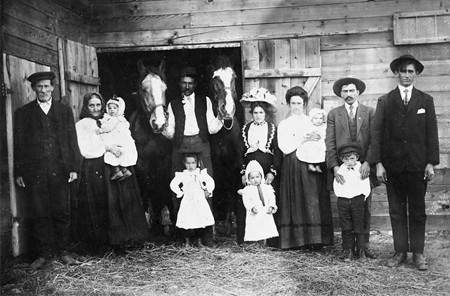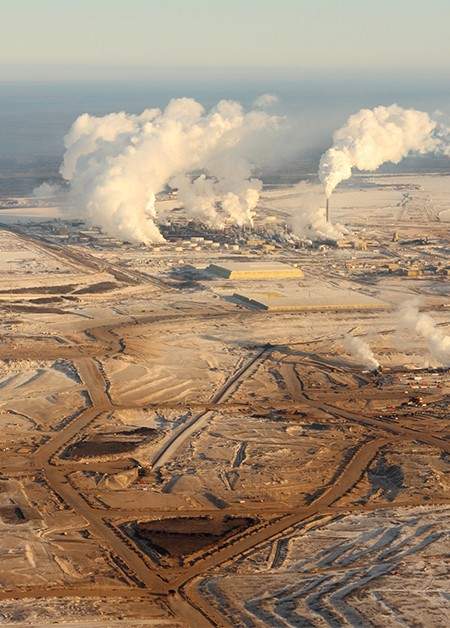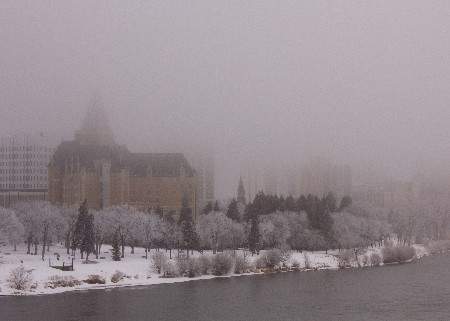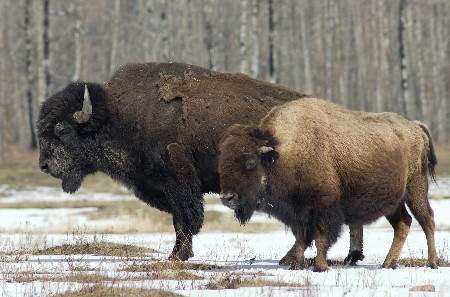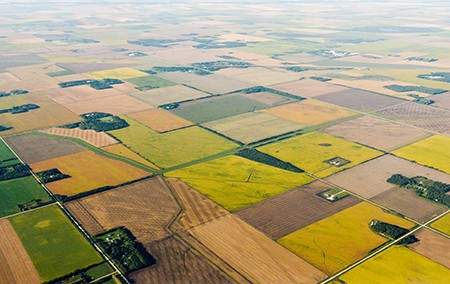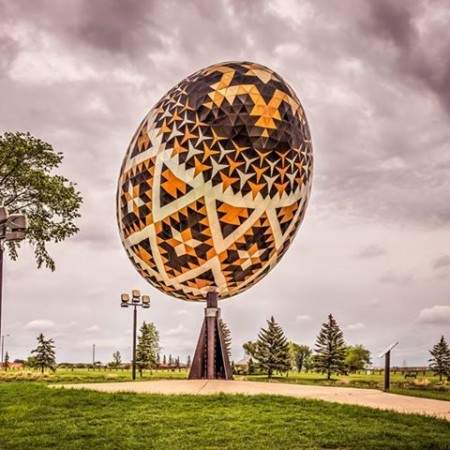No
The Prairie Provinces
The vast stretch of land between British Columbia and Ontario comprises an area known as the Canadian Prairies, a 2,000 km valley of plains, forests, and farmland. Divided into three provinces — Alberta, Manitoba, and Saskatchewan — the resource-rich region has long served as the country’s breadbasket and a crucial lynchpin in the national economy.
While the Prairies are now home to some of Canada’s biggest cities, rural life remains an important part of the region’s identity. At a time when more and more Canadians live exclusively in downtown apartments and earn a living sitting in front of computers, the Prairies are a place where farming, mining, and oil still generate a livelihood for many, and traditional-minded folk live in small, pioneer-founded communities separated by vast fields and open skies.
Geography of the Prairies
The Prairies begin where the Rocky Mountains end, which is to say, Alberta’s western border with British Columbia. As you move east from the Rockies, the landscape gets very flat very quickly, as B.C.’s tall forests give way to plains, lowlands, and grassy fields. The soil of this region is the best in Canada, and together the three Prairie provinces house nearly 90 per cent of the country’s arable farmland. Vast fields of wheat, barley and other crops remain among the region’s most iconic sights. Flatness is by far the defining adjective of the region, though the Prairies’ lesser-known and mostly underpopulated northern region is far more forested and hilly.
Weather-wise, the prairies alternate between warm, dry, sunny days and cold nights, which get particularly fierce in the winter. Warm Chinook winds and thunderstorms have helped contribute to the romantic idea of the Prairies as a land with sharp, moody seasons.
Owing to the region’s history of aggressive settlement and farming, the population of the Prairies is more evenly distributed than any other region in Canada, with towns and cities spread all over the interior of the three provinces rather than huddled along the U.S. border, as is common in the rest of the country.
History of the Prairies
A lasting monument to the Victorian-era colonization plans of the Canadian federal government, the three Prairie provinces all trace their histories back to 19th century settlement programs. Following Ottawa’s acquisition of the massive Rupert’s Land territory from the fur-trading Hudson’s Bay Company in 1870, and subsequent creation of the sea-to-sea Canadian Pacific Railroad, Ottawa promoted “homesteading” — where large swaths of government-owned land were sold to settlers at very low cost — as a way to ensure the speedy occupation and development of the new territory. It worked, and the late 19th and early 20th centuries saw large waves of immigrant farmers, particularly from Germany, Scandinavia, Russia and Ukraine, help transform the previously underpopulated area into a thriving base of Canadian agriculture. Though these white settlements largely displaced the indigenous communities who were already living there, the Great Plains Indians of the Blackfoot, Cree, Ojibwa, and Sioux nations have proven resilient, and today aboriginal people and culture remain more present on the Prairies than anywhere else in Canada, outside the North.
Canada’s farming boom came to an abrupt end during the 1920s and thirties, when the so-called Dust Bowl era of storms, droughts and crop failures further devastated a region already hard hit by the Great Depression (1929-1939). Born from economic unease, the Prairies quickly became a hotbed of political radicalism; socialism, communism and fascism all rose in popularity, as did the uniquely Canadian movements of farmer progressivism and Social Credit monetary theory. All the Prairie provinces retain distinctive political parties to this day.
After the economic boom that followed World War II (1939-1945), the Prairie economies stabilized, and were further buoyed by new discoveries of oil, minerals, and natural gas. Steady economic growth has helped the provinces of the region diversify their economies in recent decades, moving away from farming and natural resources in favour of more service-oriented, “white collar” forms of employment as more residents begin to abandon rural life for an urban lifestyle similar to that of the larger provinces.
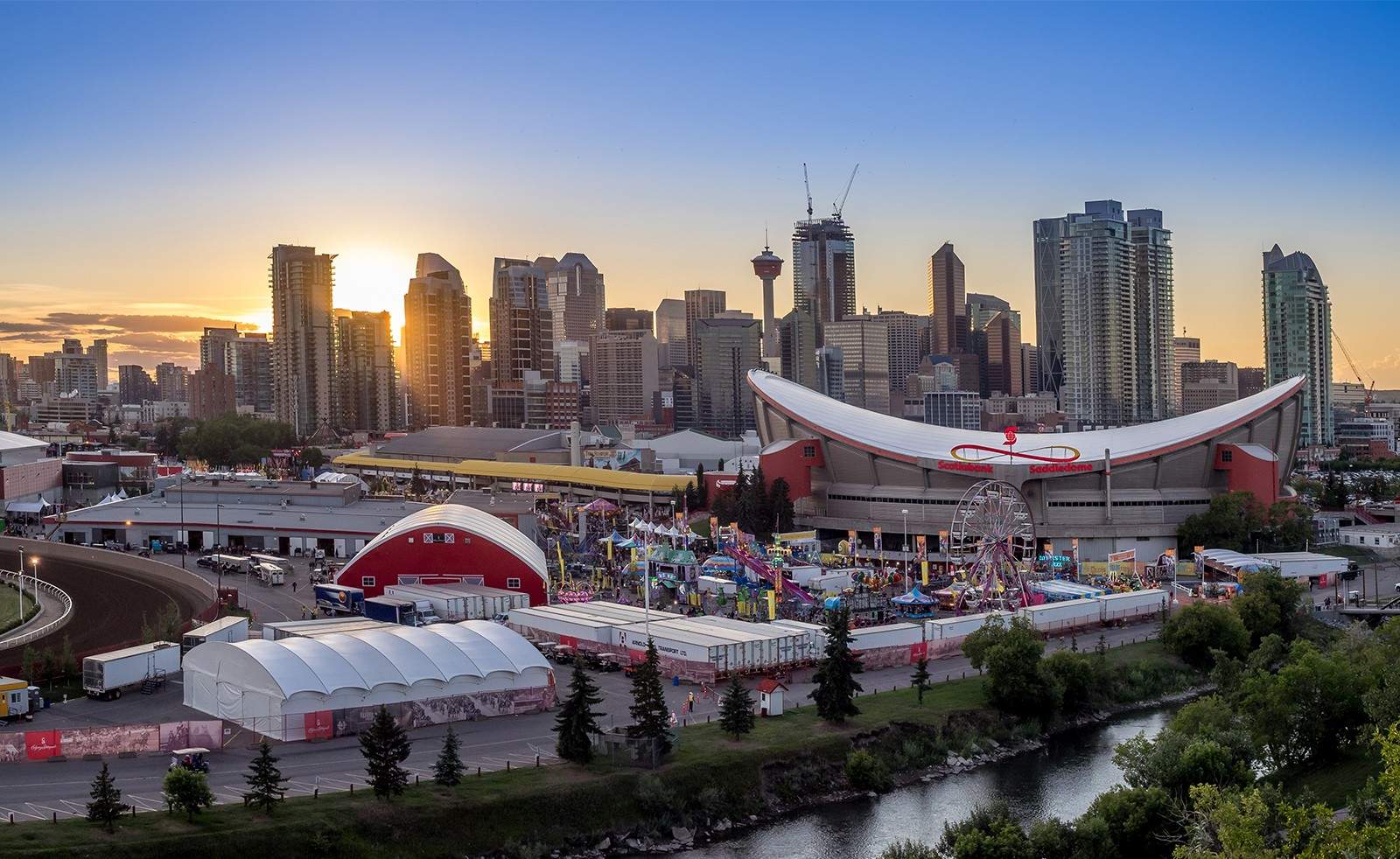
The city of Calgary on the eve of the Calgary Stampede, a week-long, cowboy-themed festival.
Jeff Whyte/Shutterstock
Alberta
The country’s energy powerhouse, Alberta has exploited its great natural resources to become the richest per-capita province in Canada — with a generous self-image to boot. Today, Alberta is known for being a sort of “Canadian Texas,” due to its vast oil fields, cowboy culture and long tradition of political conservatism.
Owing to the region’s comparatively dry, grassy landscape, Alberta’s early homesteaders found their land better suited for cattle ranching than farming and founded thriving Albertan beef industry that continues to this day. Its poor farmland scaring settlers to the lusher terrains of neighbouring Saskatchewan and Manitoba, Alberta languished in its first few decades of provincehood, but then in 1947 oil was discovered in the city of Leduc and the place was never quite the same.
From the 1950s to the 1970s, Alberta underwent a massive oil boom that helped Canada become one of the world’s leading petroleum-exporting countries, and Alberta the nation’s richest province. Cities like Calgary and Edmonton exploded with growth as new jobs in the energy sector (and all the related industries around it) drew thousands of wealth-hungry residents, while a government rich on oil royalties was able to attract even more with promises of low taxes and cheap utilities. Oil remains Alberta’s dominant industry to this day, and even as traditional wells begin to dry up, extraction and drilling continues thanks to the province’s recently developed oil sands in the north. Oil can be a risky investment, however, and during periods when the global price plummets — as it did most recently in 2014 — the province tends to enter a deep recession.
Albertan culture is known for being quite conservative and traditional, with a strong focus on family, Christianity, and community. Politically, the province is often portrayed as a right-wing outlier in an otherwise fairly liberal country, and thus in a permanent state of tension with the rest of Canada. During federal elections, it’s not uncommon for every one of Alberta’s parliamentary districts to elect a Conservative Party member, and the province has been governed continuously by the Conservatives (with only one four-year break) since 1971. Many of the country’s most famous conservative politicians, such as recent Tory prime minister Stephen Harper (b. 1959), originate from the province.
For information about things to see and do in Alberta, see the Alberta tourism chapter.
More About Alberta
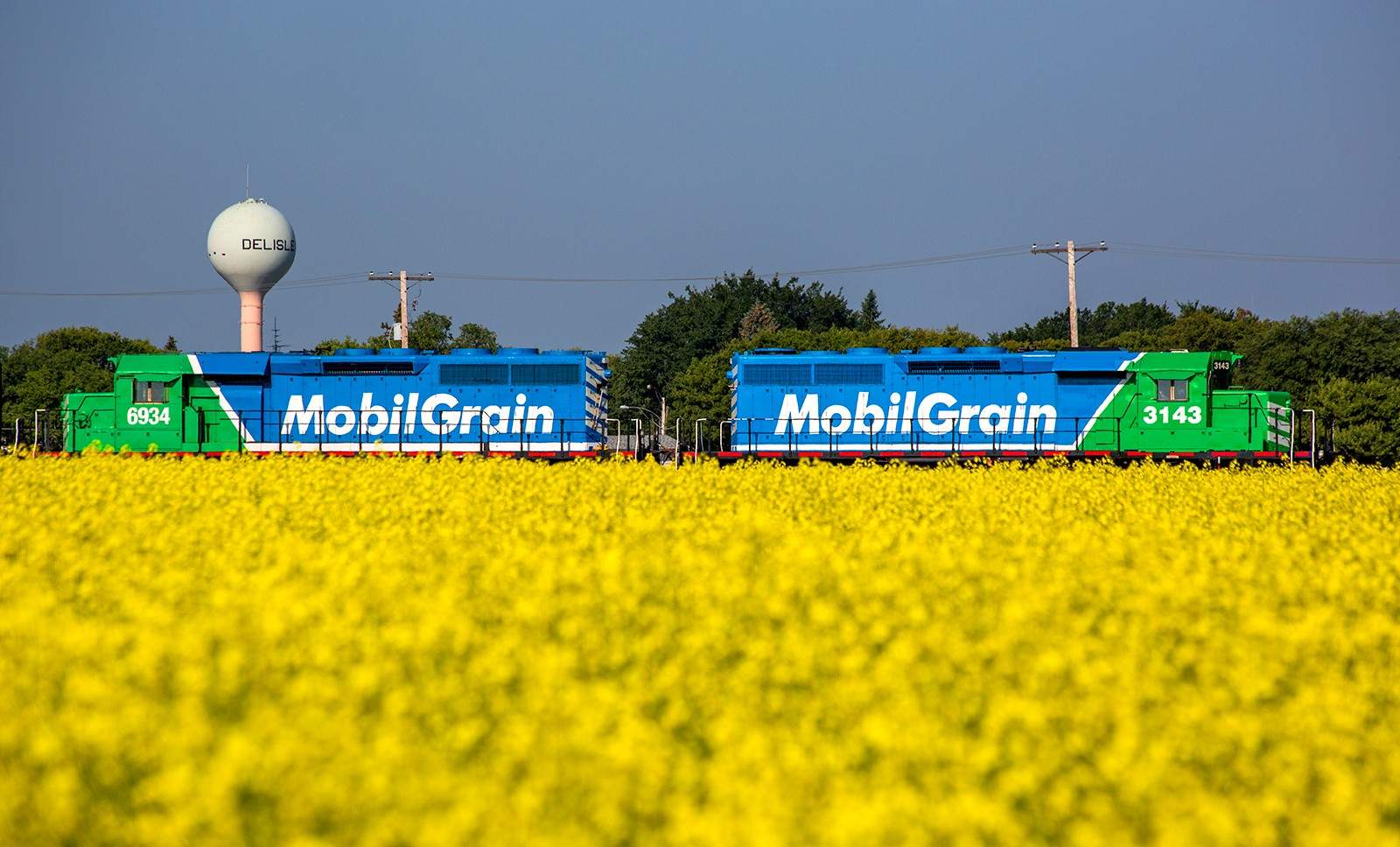
Grain locomotives parked in Delisle, Saskatchewan.
Mark Zulkoskey/Shutterstock
Saskatchewan
The most stereotyped of the three Prairie provinces, many Canadians will consider Saskatchewan synonymous with flat land, big farms, and dull people. Though the last point can certainly be debated, the other two are indisputable: Saskatchewan is entirely mountain-free, and its vast acres of farmland comprise nearly 50 per cent of the country’s total.
The preferred destination of settlers during the homestead period, Saskatchewan quickly rose to become the third biggest province in Canada until World War II (1939-1945), greatly prospering from the Canadian agricultural boom of the early 20th century. Though the province was dubbed a “one crop economy” for being so dependent on wheat farming, technological advancements after the war led to the discovery of new sources of wealth under the ground, notably uranium, oil and potash, allowing for a more diversified economy. Fuelled by favourable resource prices and growing trade with the United States, in recent years Saskatchewan has steadily risen to become one of the richest parts of Canada.
These days, fewer and fewer Saskatchewaners work as farmers or miners as more residents take up careers in the vast “service sector” of office jobs, bureaucracy and retail that have come to dominate the Canadian economy in general. Even so, the province’s one million residents remain fairly spread out, and Saskatchewan’s two biggest cities, Regina and Saskatoon, house less than 40 per cent of the provincial population. The province’s famously easygoing, small-town culture of tractors, trailers and truck stops has been celebrated in everything from sitcoms to folk songs.
More About Saskatchewan
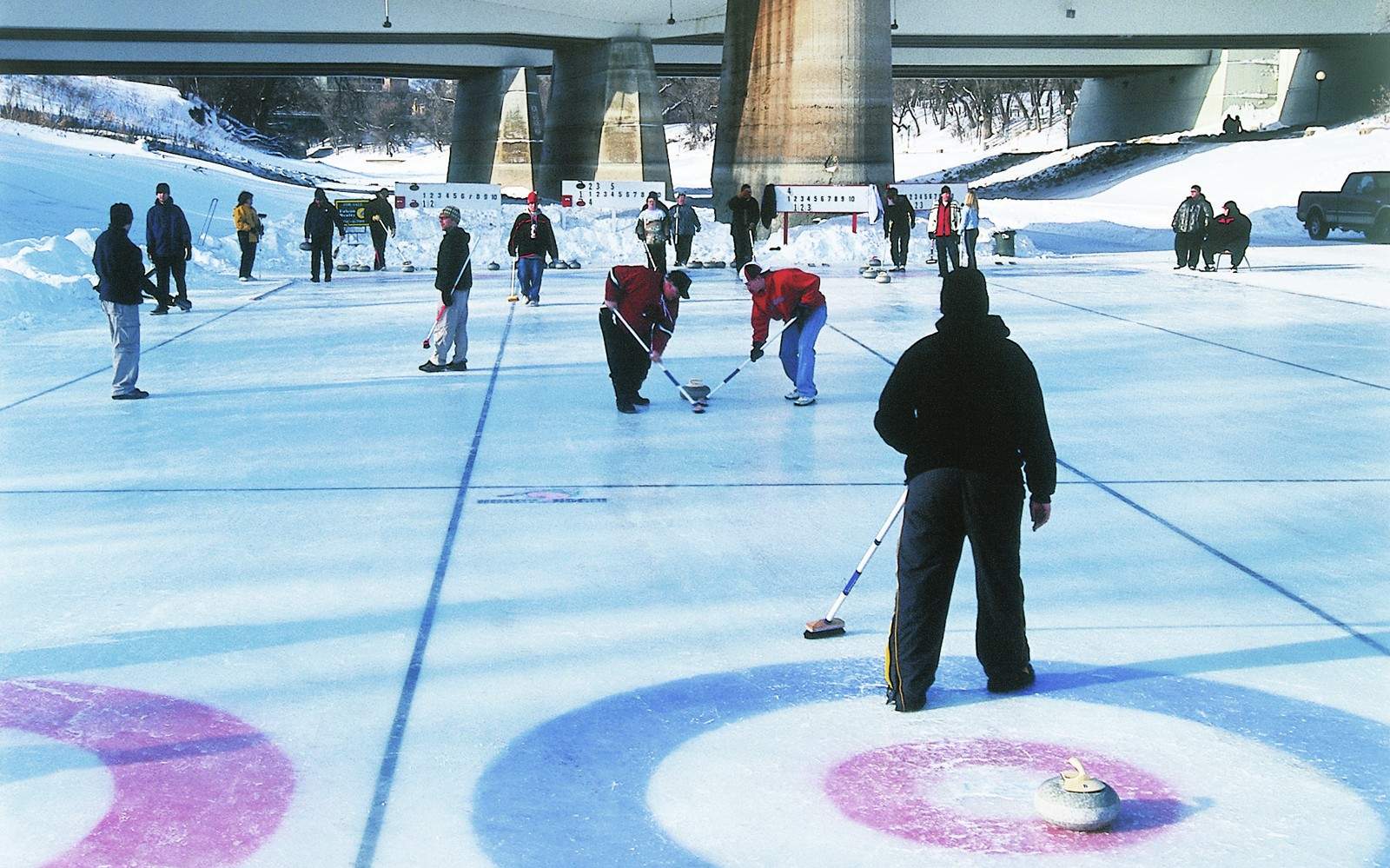
Outdoor curling on a frozen Winnipeg river.
Travel Manitoba
Manitoba
Manitoba is a history-rich region of Canada that traces its roots back to the Red River Settlement of the early 19th century, a small colony in southern Rupert’s Land inhabited by aboriginal women, French-Canadian fur traders, and their mixed-race offspring, known as the Métis. The Métis people formed a distinctive hybrid culture of aboriginal and French traditions, and were largely independent and self-governing. This came to an end in 1869, when the Canadian federal government attempted to seize the Red River lands to make way for the Canadian Pacific Railway, triggering a phase of armed conflict known as the Red River Rebellion. In 1870, Prime Minister John A. MacDonald (1815-1891) negotiated with the Métis leaders to found Manitoba as Canada’s fifth province, though Métis displeasure with the deal would eventually spawn a second phase of armed conflict, known as the North-West Rebellion, in 1885. After that, in turn, was put down, Manitoba’s Métis culture largely was wiped out as waves of white settlers flooded in and displaced the locals. Today, the province is 90 per cent white, with most Manitobans tracing their roots to 19th century British, French, German, or Ukrainian immigrants. Only in recent years has Manitoba come to celebrate its Métis past as an important part of its identity.
Geographically, Manitoba is a mix of northern forests and southern grasslands, and contains three of the country’s biggest lakes — Lake Manitoba, Lake Winnipegosis and Lake Winnipeg. Though the vast majority of Manitobans live in or around the capital city of Winnipeg, the far-north city of Churchill on the coast of Hudson Bay remains equally famous for its history with the fur trade and tourist-friendly arctic animals.
Manitobans boast of being hearty survivors of some of the harshest weather in Canada (floods and tornadoes are not uncommon), but also take pride in the natural beauty and varied wildlife of their region, which includes beavers, bears, caribou, wolves, and buffalo. In contrast to Alberta and Saskatchewan, Manitoba lacks an easily caricatured identity, and has had far less cultural, political and economic impact on Canada at large. In many ways, the defining theme of Manitoba may simply be its mellow diversity — of land, nature, politics and people.
